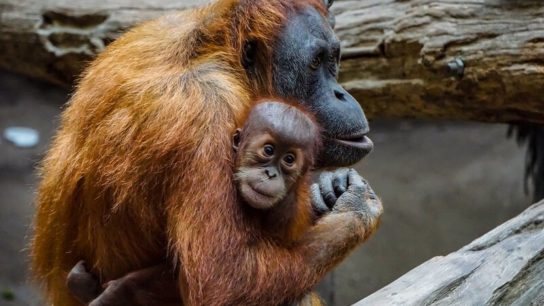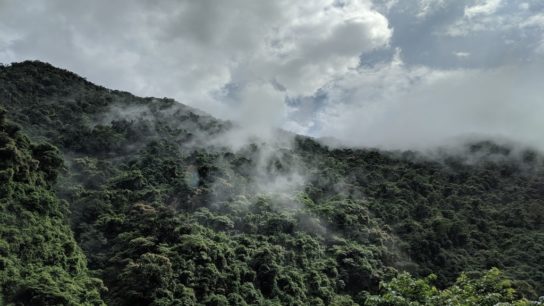Could this week’s pivotal United Nations biodiversity summit in Cali, Colombia’s “city of birds,” finally be the moment the global community moves as one for nature?
—
The precious diversity of life across the world is fundamental to each and every one of our lives. The health of our natural ecosystems is essential for the food we eat, the water we drink, and the air we breathe. Yet this support system is disappearing globally at an alarming rate. Challenges as serious as global nature loss require urgent, international action, and that is precisely why decision-makers are flocking to Colombia this week. The United Nations’ 16th meeting of the Conference of the Parties to the Convention on Biological Diversity (CBD COP16) brings together almost every country in the world to work with a vision of living in harmony with nature.
“COPs are critical opportunities for the nations of the world to come together to discuss global challenges and to plan collaborative solutions,” said writer and campaigner Mya-Rose Craig. “There aren’t many other opportunities to get representatives from almost every country into one room!”
At the last biodiversity COP – COP15 in 2022 – a landmark new plan for nature was agreed upon, where countries committed to a set of global goals and targets. The Kunming-Montreal Global Biodiversity Framework (GBF) has an ambitious headline mission to “halt and reverse” the loss of biodiversity by 2030. One of the most notable takeaways of the framework is the 30×30 goal, which requires at least 30% of terrestrial, inland water, and of coastal and marine areas “effectively conserved” or otherwise restored from degraded states by 2030.

With five years left until the end of the decade, COP16 – kicking off on Monday in Cali, Colombia – will be a key moment to shine a light on collective progress (or lack of) in response to the GBF, and to take vital decisions to ramp up action.
At COP16, three crucial steps are needed.
1. Turn global promises into national action plans
Lofty words spoken on the global stage are simply hollow promises if they are not backed up by action and urgency on the ground. After committing to the GBF in 2022, participating countries promised to come forward with their own targets and plans for domestic contributions. So far, we are way off track, with less than half of countries having submitted national targets, and far fewer putting forward their full detailed plans. Decision-makers at COP16 will need to ask some serious questions about why progress has fallen short, and how to support each other to intensify action. Key decisions on monitoring and financing will be essential for this.

2. Agree on how progress will be monitored
Being able to track progress in a clear, robust way is crucial to charting the path towards our global ambitions. We cannot afford to repeat the mistakes of the past, where reporting was patchy and difficult to collate, and the world ultimately failed to meet the previous set of global targets. But this decade can – and must – be different.
At COP15, countries agreed to a monitoring framework with a set of shared indicators that should help to guide countries towards action that is specific and measurable, and keep progress transparent. Now, countries must finalize that monitoring framework, filling the last gaps, and focus on supporting each other to get stuck in and drive positive change.
3. Get money flowing to the right places
Transformative change requires big shifts in the way our economic systems work. These kinds of global shifts will be a major theme in Cali. Countries must work together to ensure that the systems are in place to finance nature’s recovery, in ways that empower local people, and drive global equity. Big finance-related issues in the spotlight will include progress towards donor countries’ promises to mobilise US$20 billion per year in international biodiversity finance for developing countries by 2025, and the agreement of new nature finance mechanisms, especially regarding the equitable sharing of the benefits arising from the use of genetic sequencing information that is available online. The latter could be an innovative new way to ensure equitable transfers of funding from those that benefit from nature (like big pharmaceuticals) to those who contribute to its protection (stewards of biodiversity like Indigenous Peoples and local communities).

At COP16, it is time for the world to come together to get back in step with nature. That means implementing imperative action to move to a global rhythm that is in “peace with nature”, as called for by the Colombian COP Presidency in the official slogan of the summit.
Cali is famous not only for its rhythm, but for its astonishing diversity of nature. Colombia is home to almost one-fifth of the recorded bird species in the world, and Cali is thought to be its city with the highest diversity of birds. With this flurry of life on their doorstep, gracing the views from the UN negotiating rooms, let us hope decision makers are inspired to take genuine action to protect our precious biodiversity, for the sake of us all.
In the words of COP16 President, Susana Muhamad: “We hope that the COP 16 in Colombia can help the world to make peace with nature, so that we can sustain and maintain life on the planet forever.”
Featured image: UN Biodiversity/Flickr.
More on the topic: Over 80% of Nations Miss Deadline to Submit Plans to Preserve Biodiversity Ahead of COP16
This story is funded by readers like you
Our non-profit newsroom provides climate coverage free of charge and advertising. Your one-off or monthly donations play a crucial role in supporting our operations, expanding our reach, and maintaining our editorial independence.
About EO | Mission Statement | Impact & Reach | Write for us














